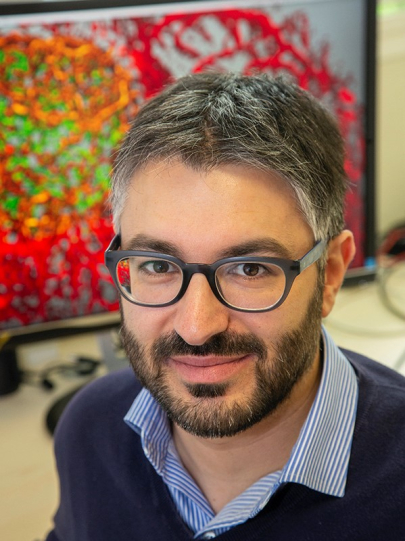Giorgio SeanoInstitut Curie - CNRS / Inserm / Université Paris-Saclay
Mes recherches
I am currently the Head of the Tumor Microenvironment Lab in Institut Curie Research Center, Orsay-Paris. My scientific interests are tumor angiogenesis, vessel co-option, cell migration and radioresistance. I received my PhD in “Complex Systems in Life Science” in 2010 from University of Turin, Italy. During my PhD training and a postdoc period in Italy, (a) I investigated tumor angiogenesis and integrins, (b) I provided the first evidence of a new sub-cellular structure – the endothelial podosome rosette – that controls blood vessel branching during sprouting angiogenesis and (c) developed the first ex vivo human knock-down angiogenesis assay. In 2012, I joined the laboratory of Dr. Rakesh K. Jain in Harvard Medical School (Boston) and focused my research on tumor microenvironment, brain tumors and intravital microscopy. Specifically, I investigated (a) physical forces from brain tumors and their effects on neuro-vascular functions and (b) vessel co-option in glioblastoma. In 2017, I was selected as a Junior Group Leader in Institut Curie and I am now setting up my new laboratory with support from the ERC Starting Grant, ATIP-Avenir, ARC Fondation and PIC3 grants as well as the IC-3i European co-funded PhD program.
Radioresistance and vessel co-option in glioblastoma
Glioblastoma (GBM) is the most deadly type of human cancer. Despite a very aggressive treatment regime – including resection of the tumor, radiation and chemotherapy – its estimated recurrence rate is more than 90%. Recurrence is supposedly mostly caused by the regrowth of highly invasive cells spreading from the tumor bulk, which are not removed by resection. Chemoradiation is also insufficient in preventing tumor regrowth, and the fact that GBM is composed of intrinsically treatment-resistant perivascular glioma stem cells (GSCs) – self-renewing, multipotent and tumor-initiating cells – is a reason for this. To develop an effective therapeutic approach, we need to better understand the underlying molecular mechanism of radiation resistance and tumor spreading in GBM. Evidence from the literature shows that radiation increases the number of GSCs, as well as GBM invasion and vascular satellitosis (i.e., vessel co-option), and point out the vascular niche as a crucial microenvironment condition to maintain the GSCs’ resistance to therapy. The unknown factor is the dynamics of GSCs and how they end up in the vascular niche, i.e., vessel co-option. Using multiple strategies, such as multiphoton intravital microscopy, orthotopic models of GBM, organotypic cultures, screenings and survival studies, we will investigate and mechanistically change the dynamics of GSC and differentiated GBM cells in order to understand the role of their interaction with brain vessels and whether this confers resistance to radiotherapy. These studies will provide clinically relevant insights into the involvement of GSCs, the vascular niche and vessel co-option in the resistance of GBM to therapy. Since all GBM patients receive radiotherapy, many would benefit from therapeutic strategies aimed at increasing the efficacy of radiotherapy.
Giorgio Seano est également lauréat ERC Starting Grant 2018
